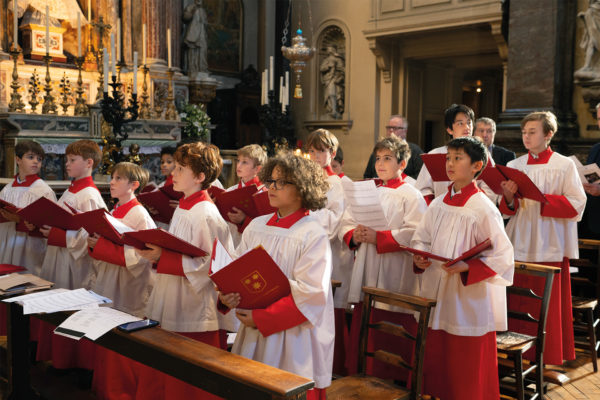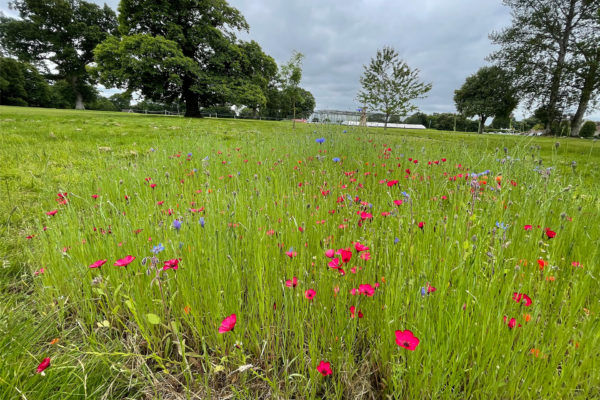City Schools with Green Ideals
By
6 months ago
Urban schools are alive with smart-thinking eco-champions.
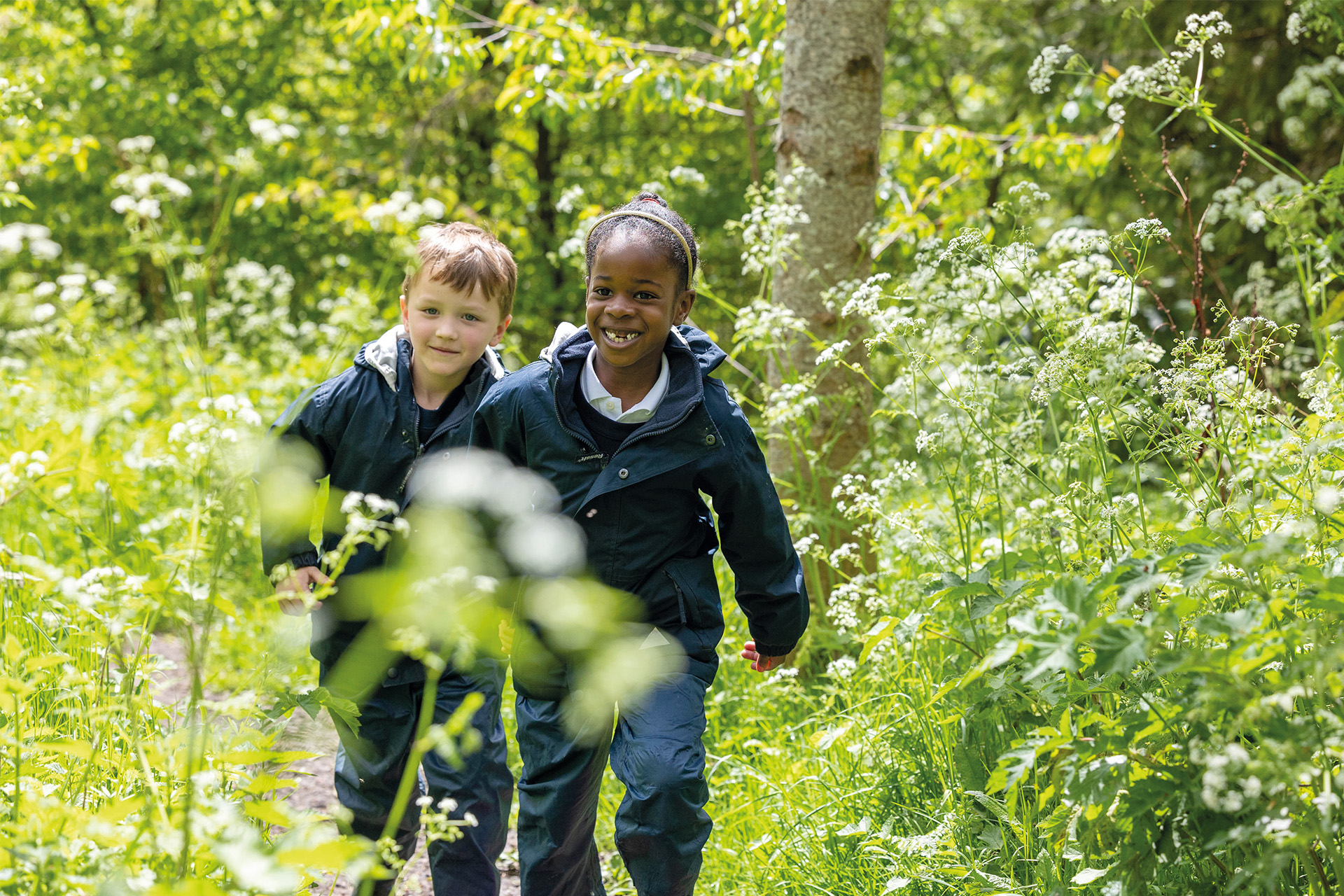
In schools with bucolic settings, surrounded by nature, it’s easy to see how they can serve as a constant reminder of the need to care for the environment. What about schools in urban settings? How do they foster green ideals among the school community, both practically and through the curriculum? These schools demonstrate that a city location is not an impediment to making their spaces as green as possible in all possible senses.
At Notting Hill & Ealing High School (NHEHS), Ashleigh Cassar has taken up the new role of Environment and Sustainability Lead, co-ordinating student-led initiatives and developing an environmental and sustainability curriculum that is woven through academic and PSHCEE lessons and co-curricular clubs. ‘My role enables young minds to take action and demonstrate how we, as a school community, can be front runners in reducing climate change.’
Cassar illustrates how there are ways around some of the limitations an urban setting presents. ‘We would love to include tree planting initiatives on our school grounds. However, with our limited space we have had to think more carefully about how we promote such initiatives. This year, the girls in both Senior and Junior School have partnered with Trees for Cities where they were given an opportunity to plant trees on Horsenden Hill.
‘Thanks to our Parents Guild, we are well on our way to funding a vertical walled meadow which will contain a range of native plant species, which, in turn, should positively impact our efforts to boost biodiversity in our urban school.’
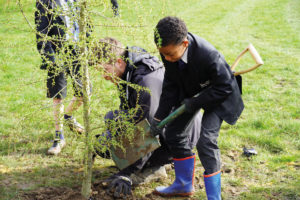
Dulwich College pupils planting trees.
Similar biodiversity initiatives have been implemented at Dulwich College. As part of their annual EcoWeek, which focuses on interdisciplinary approaches to environmental issues, Year 12 Geography students took part in a project learning about biodiversity on the school site. In tandem with academics from the University of York, students learned how to identify biodiversity which then led on to rewilding initiatives on the college grounds. It enabled students both to study and then implement practical positive changes for the environment.
Cyrus Golding, Head of Advanced Electives and Head of Geography and Katy Mills, Head of Sustainability and Procurement see this dual approach as imperative. ‘The ethos of not only learning about climate change and ecological catastrophe, but students also being equipped to make change, is at the heart of the College’s ethos.’
At King Edward’s School, Bath (KES), the way environmental issues are embedded throughout the curriculum has borne fruit: they have won the Raspberry Pi competition twice. Last year’s project was to develop a device that would accelerate energy transition to sustainable and renewable sources in the home. Their winning team devised a shower app that helped users reduce their shower time and therefore, the amount of energy needed to heat water.
Pupils at KES, facilitated by supportive staff, are a key driver in ensuring environmental matters remain front and centre. Headmaster Martin Boden states, ‘For many years, KES pupils and staff have added strong voices to initiatives such as the Environmental Action Group and the Bath and North East Somerset Youth Climate Summit. I am delighted that they are again helping to lead on ambitious projects that will help both the school and current and future generations of pupils to reflect on and tackle the climate challenges that we are facing.’
Eco Warriors in each year run a weekly ‘Green Form’ competition, inspecting each form room to see how green it is regarding recycling, composting and plant care. Last year they organised a short film called My Perfect Planet featuring teachers, office staff, pupils and support staff describing their ideal future.
There’s an active Eco Club within the junior school which also hosts an annual Eco Day, where pupils, staff and parents join together to improve the outdoor spaces, such as creating a new nature trail around the site, cutting back shrubs to allow natural light into the classrooms and clearing the pond dipping area. A lunchtime club exists to build and race an electric go-kart as part of the Greenpower Trust’s initiative to encourage an interest in STEM.
On the site itself, the installation of solar panels at the school’s North Road campus now provides almost 40 percent of the site’s energy and its next major development, a new academic and pastoral building for the senior school, has been designed to ensure it is ‘net zero carbon’ in use. A food procurement policy focuses on food miles, origin, and the reduction of food waste, sourcing food from local suppliers. Equally, a focus outside the school site sees parents offsetting the carbon footprint of any foreign trips by donating to Avon Needs Trees which is creating a new forest South of Bristol.
A greener future for its pupils sees KES’s careers programme promote opportunities in the sustainability sector with a recent Green Careers Convention welcoming experts to speak to the sixth form about their experiences of working in the environmental industry. Joe Johnson, a year 13 pupil and member of the Sustainability Committee says, ‘I can say that these significant tangible changes make us feel very hopeful and privileged to be at a school where the pupil voice is taken seriously. This is only the beginning: the KES Green Evolution has begun!’
Similarly, NHEHS also hosted the Girls’ Day School Trust talk on careers in sustainability to 25 schools in the network. There are also plans to hold a Green Careers Conference with local schools. Their Green STEM challenge in 2023 gave Year 12 students and six local partner schools an opportunity to get involved with a higher level STEM research project where they developed solutions to the climate and energy crisis under the guidance of research scientists from Imperial College, presenting their work at the Natural History Museum in March this year. ‘We are passionate about encouraging more young people, particularly women, into green careers,’ adds Cassar.
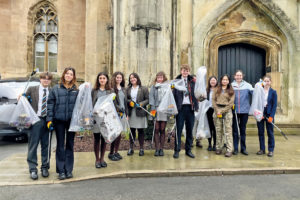
Community litter picking at St Peter’s York.
At St Peter’s in York, which has a very active Eco Council, getting involved in initiatives outside the school grounds helps raise awareness. Pupils have taken part in the Great British Spring Clean, litter picks and have also travelled to Bridlington to undertake a beach clean. On site, an auto shut-off of all PCs after 8pm has reduced energy usage along with posters reminding people to turn off lights and reduce water usage in the bathrooms. Future plans for the school include rain gardens and wild planting to facilitate drainage and biodiversity along with suggestions for green roofs and water butts.
City-based schools often bring to mind transport issues. NHEHS received a Gold TfL STARS award in 2023 which recognised them as among the top 10 percent of London schools which have transformed travel habits and seen a reduction in car use. Minibuses with 25 seats have been upgraded to 50-seat coaches, and a ‘Walk to School Week’ takes place every October. ‘All students have a good understanding that they do come from an urban demographic and that their impact may look different to schools in more rural areas,’ says Cassar. ‘They understand active travel is one of the biggest ways to impact a school in an urban setting.’
NHEHS demonstrates how an urban environment doesn’t have to limit green initiatives if a little imagination is used. They have installed a junior playground made from recycled trainers with Nike Grind, and the Parents Guild set up a second-hand uniform shop (for which a pupil built the website) to reduce waste. Income raised from this will fund the vertical living wall demonstrating the concept of a circular economy. Christmas jumper and World Book Day costume swapping events also reinforce the message about landfill and reducing waste.
NHEHS’s new carbon-neutral sustainable junior school opened in 2023 complete with a forest garden and science garden, its design aimed at bringing the ‘outside in.’ ‘The construction and design choices reflect the values we instill in our students, fostering a deep respect for the planet and a commitment to being part of the solution to the world’s challenges. With its environmentally friendly features, the building not only serves as an inspiring learning environment but also as a physical embodiment of the lasting impact our girls can make in the realm of sustainability,’ explains Head of the Junior School, Kate Bevan.
This shows then, a city location in no way inhibits a school from pursuing vigorous green initiatives and encouraging its pupils to take up the baton. There are ways around a lack of outside space. These schools show commitment and imagination in the ways in which they pursue green ideals, from embedding learning throughout the curriculum, through co-curricular clubs and engagement with the community and opportunities for learning beyond the school site. Pupils feel empowered to take action and it is apparent that these are more than just green ideals; it is very much at the core of what these schools now are.




